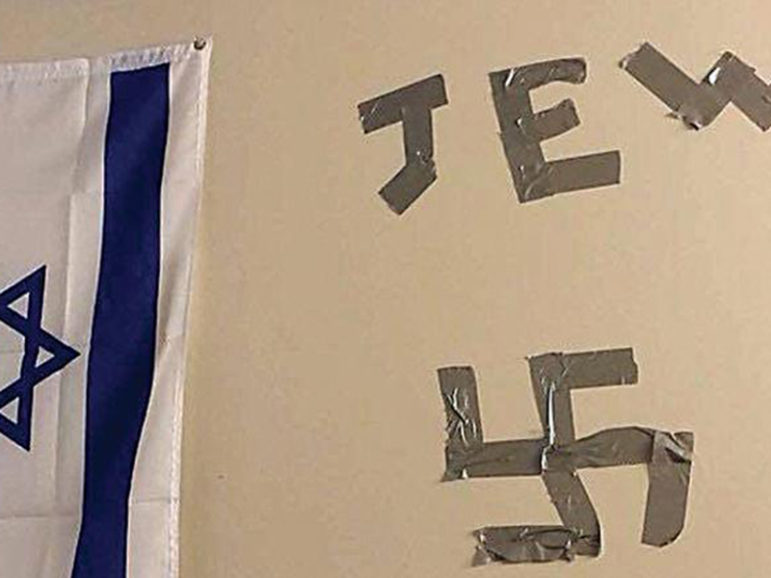(AP) — The Anti-Defamation League is reporting a 57 percent increase in anti-Semitic incidents in the U.S. last year, the highest tally that the Jewish civil rights group has counted in more than two decades, according to data it is releasing Tuesday (Feb. 27).
The New York City-based organization found 1,986 anti-Semitic incidents last year, up from 1,267 in 2016. That’s the highest total since 1994 and the largest single-year increase since the group began collecting this data in 1979.
The ADL said the sharp rise includes 952 vandalism incidents, an increase of 86 percent from 2016. The group also counted 1,015 incidents of harassment, including 163 bomb threats against Jewish institutions.
ADL national director and CEO Jonathan Greenblatt said the “alarming” increase appears to be fueled by emboldened far-right extremists as well as the “divisive state of our national discourse.”
“Less civility has led to more intolerance,” he told The Associated Press.
Greenblatt also acknowledged that heightened awareness of the problem likely led to increased reporting of anti-Semitic incidents.
Anti-Semitic incidents at schools and on college campuses nearly doubled for the second year in a row, with 457 such incidents reported in non-Jewish schools last year, the ADL report says.
The ADL and other groups have reported a surge in the number of incidents in which far-right extremist groups have posted racist and anti-Semitic fliers on college campuses.
ADL spokesman Todd Gutnick said the report’s tally only counts incidents in which fliers had explicitly anti-Semitic messages.
The ADL also counted 19 anti-Semitic physical assaults last year, a 47 percent decrease from 2016.
Most of the bomb threats against Jewish community centers and day schools last year were allegedly made by an 18-year-old Israeli-American Jewish hacker, who was arrested in Israel last March. Separately, a former journalist from St. Louis pleaded guilty to making a string of fake bomb threats to Jewish organizations last year in the name of his ex-girlfriend in an effort to disrupt her life.
Rabbi Shmuel Herzfeld, of Ohev Sholom-The National Synagogue in Washington, said neo-Nazis in the U.S. are emboldened “in a way I have not seen in my lifetime.”
“It’s scary,” said Herzfeld, whose synagogue received a bomb threat in April. “I think there is no question that it’s on people’s minds, and there is more of it out there.”
The ADL is urging Congress to pass legislation to expand federal protections against bomb threats to religious institutions. The legislation, approved by the U.S. House of Representatives in December, awaits action in the Senate, the ADL said.
Greenblatt also urges “all public figures” to speak out against anti-Semitism “whether you’re the president of the United States or the head of the local PTA.”
President Trump was widely criticized for saying there was “blame on both sides” after violence erupted in August at a white nationalist rally in Charlottesville, Va., where 32-year-old Heather Heyer was killed when a man drove his car into a crowd of demonstrators.
“There’s no question we would love to see the president call out anti-Semitism as consistently and clearly as he does other issues,” Greenblatt said.
The ADL says it compiles its incident data from news reports and information provided by victims, law enforcement and community leaders.
“We just don’t report something we’ve heard. We call, we check and we verify,” Greenblatt said.





